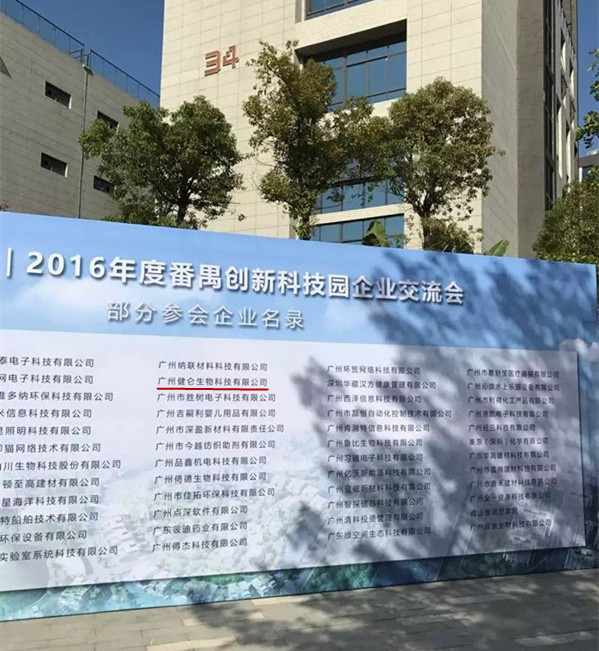- 產品描述
montanensis立克次體 IgG ELISA試劑盒
R. montanensis? IgG ELISA Kit
廣州健侖生物科技有限公司
主要用途:用于檢測人血清中的montanensis立克次體IgG抗體
產品規格:96T/盒
主要產品包括:包柔氏螺旋體菌、布魯氏菌、貝納特氏立克次體、土倫桿菌、鉤端螺旋體、新型立克次體、恙蟲病、立克次體、果氏巴貝西蟲、馬焦蟲、牛焦蟲、利什曼蟲、新包蟲、弓形蟲、貓流感病毒、貓冠狀病毒、貓皰疹病毒、犬瘟病毒、犬細小病毒等病原微生物的 IFA、MIF、ELISA試劑。
montanensis立克次體 IgG ELISA試劑盒
我司還提供其它進口或國產試劑盒:登革熱、瘧疾、西尼羅河、立克次體、無形體、蜱蟲、恙蟲、利什曼原蟲、RK39、漢坦病毒、深林腦炎、流感、A鏈球菌、合胞病毒、腮病毒、乙腦、寨卡、黃熱病、基孔肯雅熱、克錐蟲病、違禁品濫用、肺炎球菌、軍團菌、化妝品檢測、食品安全檢測等試劑盒以及日本生研細菌分型診斷血清、德國SiFin診斷血清、丹麥SSI診斷血清等產品。
歡迎咨詢
歡迎咨詢2042552662

montanensis立克次體 IgG ELISA試劑盒
| JL-FL38 | parkeri立克次體IgG ELISA | R. parkeri IgG ELISA Kit |
| JL-FL39 | montanensis立克次體IgG ELISA | R. montanensis IgG ELISA Kit |
| JL-FL40 | EB病毒衣殼IgG免疫熒光玻片試劑盒 | EBV Viral Capsid IgG IFA Kit |
| JL-FL41 | EB病毒衣殼IgM免疫熒光玻片試劑盒 | EBV Viral Capsid IgM IFA Kit |
| JL-FL42 | EB病毒早期抗原IgG免疫熒光玻片試劑盒 | EBV Early Antigens IgG IFA Kit |
| JL-FL43 | 鉤端螺旋體IgG免疫熒光試劑盒 | Leptospira IgG IFA Kit |
| JL-FL44 | 鉤端螺旋體IgM免疫熒光試劑盒 | Leptospira IgM IFA Kit |
| JL-FL45 | 果氏巴貝西蟲免疫熒光玻片 | Babesia microti IFA Substrate slide |
| JL-FL46 | 果氏巴貝西蟲IgG免疫熒光試劑盒 | Babesia microti IgG IFA Kit |
| JL-FL47 | 果氏巴貝西蟲IgM免疫熒光試劑盒 | Babesia microti IgM IFA Kit |
| JL-FL48 | 埃立克體IgG微量免疫熒光試劑盒 | Ehrlichia canis Canine IFA IgG Kit |
| JL-FL49 | 包柔氏螺旋體菌IgG免疫熒光試劑盒 | Borrelia IgG IFA Kit |
| JL-FL50 | 布魯氏菌IgG免疫熒光試劑盒 | Brucella IgG IFA Kit |
| JL-FL51 | 里氏新立克次體IgG免疫熒光試劑盒 | Neorickettsia risticii IgG IFA Kit |
| JL-FL52 | 弓形蟲IgG免疫熒光試劑盒(檢測貓) | Toxoplasma IFA Feline IgG Kit |
| JL-FL53 | 弓形蟲IgG免疫熒光試劑盒(檢測狗) | Toxoplasma IFA Canine IgG Kit |
二維碼掃一掃
【公司名稱】 廣州健侖生物科技有限公司
【】 楊永漢
【】
【騰訊 】 2042552662
【公司地址】 廣州清華科技園創新基地番禺石樓鎮創啟路63號二期2幢101-3室
【企業文化】


2014年8月12日STEM CELL REPORTS期刊封面文章介紹人類誘導多能干細胞(iPSC)分化成心肌細胞(iPS-CM)為研究長-QT綜合癥。患者衍生的iPS-CM出現*的機遇對研究遺傳心律失常綜合癥在天然組織中。舊金山格萊斯頓學院的研究人員從病人攜帶的兩種不同形態的長-QT綜合癥的細胞中生成心肌細胞,然后用這些iPS-CM揭示普通的致心律失常性細胞通路。這些發現揭示功能上的定向治療是不依賴于特定長-QT突變這種綜合癥患者可能受益。圖片由Paweena Lizarraga 和 Luke Judge制作。紅色表示心臟肌鈣蛋白T,心臟肌原纖維的一個重要標志。黃色/綠色與其他thin-filament對應相關的蛋白質。藍色(DAPI)表示細胞核。
英國《每日電訊報》8月12日發表題為《蜂毒、蛇毒、蝎毒有可能用來抗擊癌癥》的報道稱,實驗表明,蜜蜂、蛇和蝎子分泌的毒液能殺死腫瘤,因此毒素可能用來抗擊癌癥。
研究人員發現,昆蟲蜇傷處或爬行動物咬傷處含有的毒液在實驗室里能殺死抗原抗體癌和皮膚癌細胞。他們設法將這些毒素封入微粒內,以免毒素泄入血液并傷害患者。
伊利諾伊大學的迪帕尼揚·帕恩說:“我們在實驗室里安全使用被封入納米大小微粒中的毒素來對付抗原抗體癌和黑素瘤細胞。這種微粒在偽裝后能躲過免疫系統,將毒素直接送入癌細胞,不傷害正常組織。我們將制造出的毒肽封裝在納米微粒中,不會溶于血液而帶來副作用。”
報道說,蛇毒、蜂毒和蝎毒中含有蛋白質和肽,可附著在癌細胞壁上。但這些毒素也會損害心臟和神經細胞,造成皮下出血。帕恩說:“主要的問題是我們如何控制其毒性。”
研究小組在蜂毒中發現了一種叫做蜂毒肽的物質,它能阻止癌細胞增殖。
日本東海大學基礎學院再生醫學系肌肉生理學及細胞生物學組Dr. Tetsuro Tamaki所在團隊,從骨骼肌中分離出干細胞,并將其命名為骨骼肌源性多能干細胞。骨骼肌源性多能干細胞在受損外周神經處能分化為雪旺氏束膜和/神經內膜細胞、血管周細胞、內皮細胞和平滑肌細胞。
Dr. Tetsuro Tamaki研究發現,與健康自體神經移植相比,神經導管復合骨骼肌源性多能干細胞橋接更有利于周圍神經軸突再生,可修復長節段周圍神經缺損。作者認為,此方法的應用將極大提高人損傷周圍神經的治療效果。此觀點發表在《中國神經再生研究(英文版)》2014年7月第14期雜志上。
August 12, 2014 STEM CELL REPORTS Journal Cover Article Introduction Differentiation of human induced pluripotent stem cells (iPSCs) into cardiomyocytes (iPS-CMs) is the study of long-QT syndromes. Patient Derived iPS-CM presents an unprecedented opportunity to study genetic arrhythmia syndromes in native tissues. Researchers at Gladstone College in San Francisco generated cardiomyocytes from cells of two different forms of long-QT syndromes carried by patients and then used these iPS-CMs to reveal common pathways of the arrhythmic cells. These findings reveal that functional targeted therapy may benefit patients with a syndrome that does not depend on a particular long-QT mutation. Picture by Paweena Lizarraga and Luke Judge. Red indicates cardiac troponin T, an important marker of cardiac myofibrils. Yellow / green and other related proteins. Blue (DAPI) represents the nucleus.
The British Daily egraph website published a report on August 12 entitled "Bee venom, snake venoms, scorpion venom may be used to fight cancer," the report said that experiments show that bees, snakes and scorpions secreted venom can kill the tumor, So toxins can be used to fight cancer.
Researchers found that venom contained in insect stings or reptile bites can kill both antigen-antibody and skin cancer cells in the lab. They try to encapsulate these toxins in the particles so that no toxins can leak into the bloodstream and harm the patient.
"We are in the laboratory safe to use toxins encapsulated in nano-sized particles to fight antigen-presenting cancers and melanoma cells," said Dipani Jan Parne of the University of Illinois at University of Illinois at Urbana-Champaign. "These particles escape the immune system after being camouflaged , The toxin directly into the cancer cells, do not harm the normal tissue.We will create the toxic peptide encapsulated in the nanoparticles, will not dissolve in the blood and bring side effects.
Reported that snake venom, bee venom and scorpion venom contain proteins and peptides, can be attached to the cancer cell wall. But these toxins can also damage the heart and nerve cells, causing subcutaneous hemorrhage. Parne said: "The main issue is how we control its toxicity."
The team found a compound called bee venom in bee venom that prevents cancer cells from proliferating.
Department of Reproductive Medicine, Tokai University School of Reproductive Medicine Department of Muscle Physiology and Cell Biology Dr. Tetsuro Tamaki's team, which has stem cells isolated from skeletal muscle, names it skeletal myogenic pluripotent stem cells. Skeletal muscle-derived pluripotent stem cells differentiate into Schwann's fascia and / endoneurium cells, perivascular cells, endothelial cells and smooth muscle cells at damaged peripheral nerves.
Dr. Tetsuro Tamaki study found that compared with healthy autologous nerve graft, neural conduit composite skeletal myeloid pluripotent stem cell bridging is more conducive to axonal regeneration of the peripheral nerve, can repair long segment peripheral nerve defects. The authors believe that the application of this method will greatly improve the treatment of peripheral nerve injury. This view is published in the "Chinese Journal of Nerve Regeneration Research (English version)" 2014 July 14th magazine.



